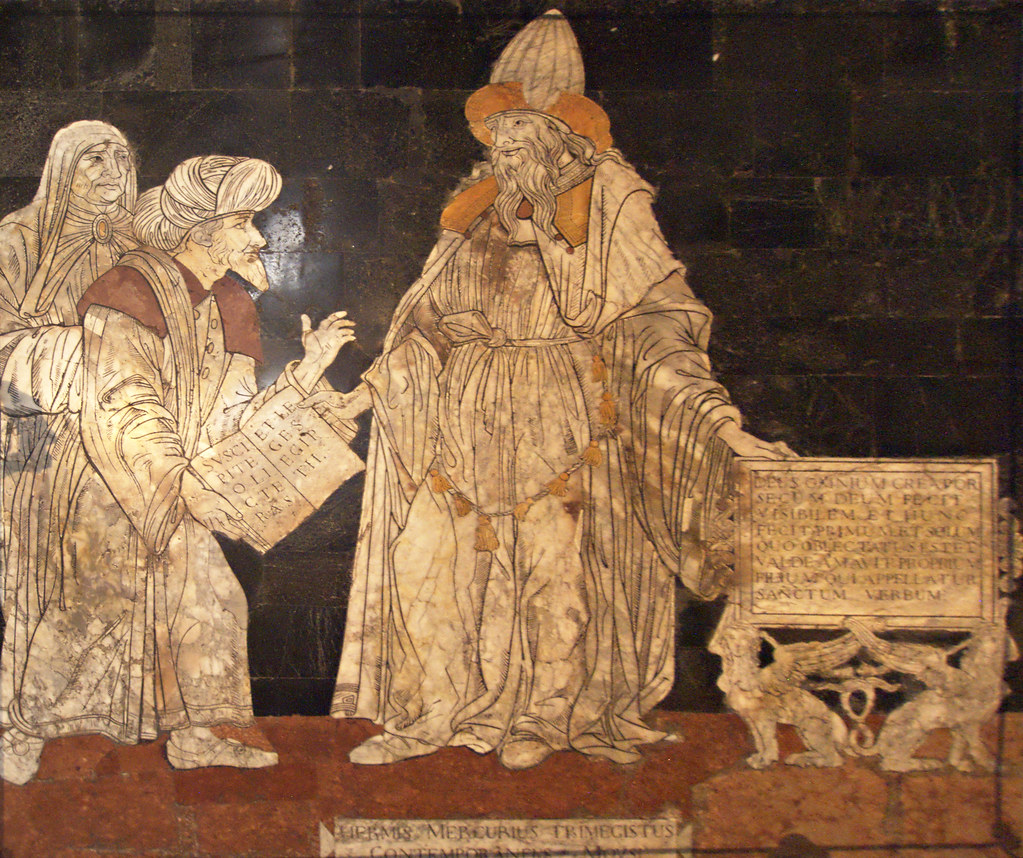
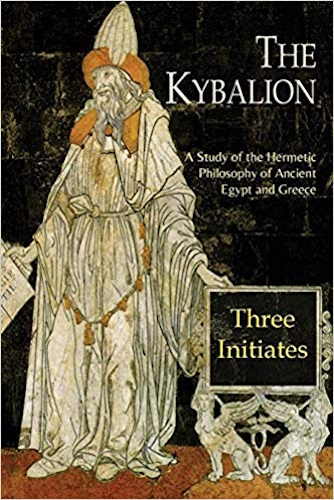

![Thrice-Greatest Hermes; Studies in Hellenistic Theosophy and Gnosis [Three Volumes in One] Thrice-Greatest Hermes; Studies in Hellenistic Theosophy and Gnosis [Three Volumes in One]](http://realityroars.com/images/affiliate-creative/thrice-greatest-hermes--studies-in-hellenistic-theosophy-and-gnosis.jpg)

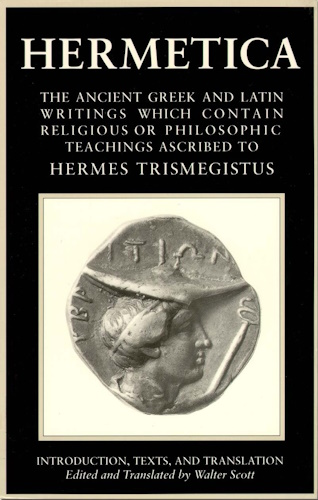



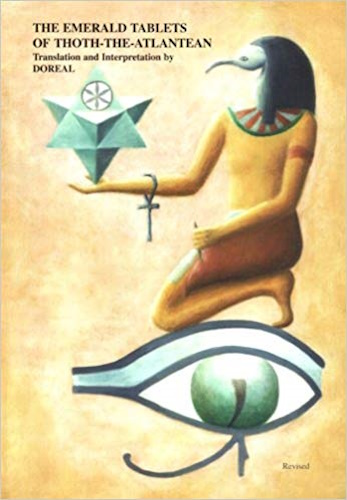

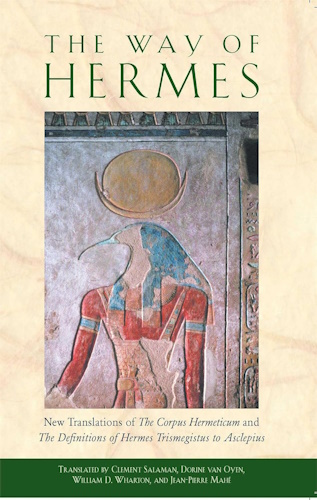

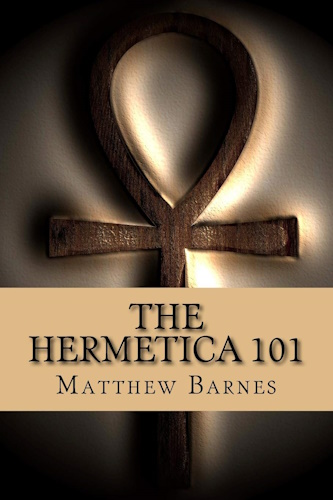

![]()
![]()
CHAPTER XIV
MENTAL GENDER
Students of psychology who have followed the modern trend of thought along the lines of mental phenomena are struck by the persistence of the dual-mind idea which has manifested itself so strongly during the past ten or fifteen years, and which has given rise to a number of plausible theories regarding the nature and constitution of these "two minds." The late Thomson J. Hudson attained great popularity in 1893 by advancing his well-known theory of the "objective and subjective minds" which he held existed in every individual. Other writers have attracted almost equal attention by the theories regarding the "conscious and subconscious minds"; the "voluntary and involuntary minds"; "the active and passive minds," etc., etc. The theories of the various writers differ from each other, but there remains the underlying principle of "the duality of mind."
The student of the Hermetic Philosophy is tempted to smile when he reads and hears of these many "new theories" regarding the duality of mind, each school adhering tenaciously to its own pet theories, and each claiming to have "discovered the truth." The student turns back the pages of occult history, and away back in the dim beginnings of occult teachings he finds references to the ancient Hermetic doctrine of the Principle of Gender on the Mental Plane-the manifestation of Mental Gender. And examining further he finds that the ancient philosophy took cognizance of the phenomenon of the "dual mind," and accounted for it by the theory of Mental Gender. This idea of Mental Gender may be explained in a few words to students who are familiar with the modern theories just alluded to. The Masculine Principle of Mind corresponds to the so-called Objective Mind; Conscious Mind; Voluntary Mind; Active Mind, etc. And the Feminine Principle of Mind corresponds to the so-called Subjective Mind; Sub-conscious Mind; Involuntary Mind; Passive Mind, etc. Of course the Hermetic Teachings do not agree with the many modern theories regarding the nature of the two phases of mind, nor does it admit many of the facts claimed for the two respective aspects--some of the said theories and claims being very far-fetched and incapable of standing the test of experiment and demonstration. We point to the phases of agreement merely for the purpose of helping the student to assimilate his previously acquired knowledge with the teachings of the Hermetic Philosophy. Students of Hudson will notice the statement at the beginning of his second chapter of "The Law of Psychic Phenomena," that: "The mystic jargon of the Hermetic philosophers discloses the same general idea" i.e., the duality of mind. If Dr. Hudson had taken the time and trouble to decipher a little of "the mystic jargon of the Hermetic Philosophy," he might have received much light upon the subject of "the dual mind"--but then, perhaps, his most interesting work might not have been written. Let us now consider the Hermetic Teachings regarding Mental Gender.
The Hermetic Teachers impart their instruction regarding this subject by bidding their students examine the report of their consciousness regarding their Self. The students are bidden to turn their attention inward upon the Self dwelling within each. Each student is led to see that his consciousness gives him first a report of the existence of his Self-the report is "I Am." This at first seems to be the final words from the consciousness, but a little further examination discloses the fact that this "I Am" may be separated or split into two distinct parts, or aspects, which while working in unison and in conjunction, yet, nevertheless, may be separated in consciousness.
While at first there seems to be only an "I" existing, a more careful and closer examination reveals the fact that there exists an "I" and a "Me." These mental twins differ in their characteristics and nature, and an examination of their nature and the phenomena arising from the same will throw much light upon many of the problems of mental influence.
Let us begin with a consideration of the Me, which is usually mistaken for the I by the student, until he presses the inquiry a little further back into the recesses of consciousness. A man thinks of his Self (in its aspect of Me) as being composed of certain feelings, tastes likes, dislikes, habits, peculiar ties, characteristics, etc., all of which go to make up his personality, or the "Self" known to himself and others. He knows that these emotions and feelings change; are born and die away; are subject to the Principle of Rhythm, and the Principle of Polarity, which take him from one extreme of feeling to another. He also thinks of the "Me" as being certain knowledge gathered together in his mind, and thus forming a part of himself. This is the "Me" of a man.
But we have proceeded too hastily. The "Me" of many men may be said to consist largely of their consciousness of the body and their physical appetites, etc. Their consciousness being largely bound up with their bodily nature, they practically "live there." Some men even go so far as to regard their personal apparel as a part of their "Me" and actually seem to consider it a part of themselves. A writer has humorously said that "men consist of three parts--soul, body and clothes." These "clothes conscious" people would lose their personality if divested of their clothing by savages upon the occasion of a shipwreck. But even many who are not so closely bound up with the idea of personal raiment stick closely to the consciousness of their bodies being their "Me" They cannot conceive of a Self independent of the body. Their mind seems to them to be practically "a something belonging to" their body-which in many cases it is indeed.
But as man rises in the scale of consciousness he is able to disentangle his "Me" from his idea of body, and is able to think of his body as "belonging to" the mental part of him. But even then he is very apt to identify the "Me" entirely with the mental states, feelings, etc., which he feels to exist within him. He is very apt to consider these internal states as identical with himself, instead of their being simply "things" produced by some part of his mentality, and existing within him--of him, and in him, but still not "himself." He sees that he may change these internal states of feelings by all effort of will, and that he may produce a feeling or state of an exactly opposite nature, in the same way, and yet the same "Me" exists. And so after a while he is able to set aside these various mental states, emotions, feelings, habits, qualities, characteristics, and other personal mental belongings--he is able to set them aside in the "not-me" collection of curiosities and encumbrances, as well as valuable possessions. This requires much mental concentration and power of mental analysis on the part of the student. But still the task is possible for the advanced student, and even those not so far advanced are able to see, in the imagination, how the process may be performed.
After this laying-aside process has been performed, the student will find himself in conscious possession of a "Self" which may be considered in its "I" and "Me" dual aspects. The "Me" will be felt to be a Something mental in which thoughts, ideas, emotions, feelings, and other mental states may be produced. It may be considered as the "mental womb," as the ancients styled it-capable of generating mental offspring. It reports to the consciousness as a "Me" with latent powers of creation and generation of mental progeny of all sorts and kinds. Its powers of creative energy are felt to be enormous. But still it seems to be conscious that it must receive some form of energy from either its "I" companion, or else from some other "I" ere it is able to bring into being its mental creations. This consciousness brings with it a realization of an enormous capacity for mental work and creative ability.
But the student soon finds that this is not all that he finds within his inner consciousness. He finds that there exists a mental Something which is able to Will that the "Me" act along certain creative lines, and which is also able to stand aside and witness the mental creation. This part of himself he is taught to call his "I." He is able to rest in its consciousness at will. He finds there not a consciousness of an ability to generate and actively create, in the sense of the gradual process attendant upon mental operations, but rather a sense and consciousness of an ability to project an energy from the "I" to the "Me"--a process of "willing" that the mental creation begin and proceed. He also finds that the "I" is able to stand aside and witness the operations of the "Me's" mental creation and generation. There is this dual aspect in the mind of every person. The "I" represents the Masculine Principle of Mental Gender-the "Me" represents the Female Principle. The "I" represents the Aspect of Being; the "Me" the Aspect of Becoming. You will notice that the Principle of Correspondence operates on this plane just as it does upon the great plane upon which the creation of Universes is performed. The two are similar in kind, although vastly different in degree. "As above, so below; as below, so above."
These aspects of mind-the Masculine and Feminine Principles-the "I" and the "Me"-considered in connection with the well-known mental and psychic phenomena, give the master-key to these dimly known regions of mental operation and manifestation. The principle of Mental Gender gives the truth underlying the whole field of the phenomena of mental influence, etc.
The tendency of the Feminine Principle is always in the direction of receiving impressions, while the tendency of the Masculine Principle is always in the direction of giving, out or expressing. The Feminine Principle has much more varied field of operation than has the Masculine Principle. The Feminine Principle conducts the work of generating new thoughts, concepts, ideas, including the work of the imagination. The Masculine Principle contents itself with the work of the "Will" in its varied phases. And yet, without the active aid of the Will of the Masculine Principle, the Feminine Principle is apt to rest content with generating mental images which are the result of impressions received from outside, instead of producing original mental creations.
Persons who can give continued attention and thought to a subject actively employ both of the Mental Principles-the Feminine in the work of the mental generation, and the Masculine Will in stimulating and energizing the creative portion of the mind. The majority of persons really employ the Masculine Principle but little, and are content to live according to the thoughts and ideas instilled into the "Me" from the "I" of other minds. But it is not our purpose to dwell upon this phase of the subject, which may be studied from any good text-book upon psychology, with the key that we have given you regarding Mental Gender.
The student of Psychic Phenomena is aware of the wonderful phenomena classified under the head of Telepathy; Thought Transference; Mental Influence; Suggestion; Hypnotism, etc. Many have sought for an explanation of these varied phases of phenomena under the theories of the various "dual mind" teachers. And in a measure they are right, for there is clearly a manifestation of two distinct phases of mental activity. But if such students will consider these "dual minds" in the light of the Hermetic Teachings regarding Vibrations and Mental Gender, they will see that the long sought for key is at hand.
In the phenomena of Telepathy it is seen how the Vibratory Energy of the Masculine Principle is projected toward the Feminine Principle of another person, and the latter takes the seed-thought and allows it to develop into maturity. In the same way Suggestion and Hypnotism operates. The Masculine Principle of the person giving the suggestions directs a stream of Vibratory Energy or Will-Power toward the Feminine Principle of the other person, and the latter accepting it makes it its own and acts and thinks accordingly. An idea thus lodged in the mind of another person grows and develops, and in time is regarded as the rightful mental offspring of the individual, whereas it is in reality like the cuckoo egg placed in the sparrows nest, where it destroys the rightful offspring and makes itself at home. The normal method is for the Masculine and Feminine Principles in a person's mind to co-ordinate and act harmoniously in conjunction with each other, but, unfortunately, the Masculine Principle in the average person is too lazy to act-the display of Will-Power is too slight-and the consequence is that such persons are ruled almost entirely by the minds and wills of other persons, whom they allow to do their thinking and willing for them. How few original thoughts or original actions are performed by the average person? Are not the majority of persons mere shadows and echoes of others having stronger wills or minds than themselves? The trouble is that the average person dwells almost altogether in his "Me" consciousness and does not realize that he has such a thing as an "I." He is polarized in his Feminine Principle of Mind, and the Masculine Principle, in which is lodged the Will, is allowed to remain inactive and not employed.
The strong men and women of the world invariably manifest the Masculine Principle of Will, and their strength depends materially upon this fact. Instead of living upon the impressions made upon their minds by others, they dominate their own minds by their Will, obtaining the kind of mental images desired, and moreover dominate the minds of others likewise, in the same manner. Look at the strong people, how they manage to implant their seed-thoughts in the minds of the masses of the people, thus causing the latter to think thoughts in accordance with the desires and wills of the strong individuals. This is why the masses of people are such sheeplike creatures, never originating an idea of their own, nor using their own powers of mental activity.
The manifestation of Mental Gender may be noticed all around us in everyday life. The magnetic persons are those who are able to use the Masculine Principle in the way of impressing their ideas upon others. The actor who makes people weep or cry as he wills, is employing this principle. And so is the successful orator, statesman, preacher, writer or other people who are before the public attention. The peculiar influence exerted by some people over others is due to the manifestation of Mental Gender, along the Vibrational lines above indicated. In this principle lies the secret of personal magnetism, personal influence, fascination, etc., as well as the phenomena generally grouped under the name of Hypnotism.
The student who has familiarized himself with the phenomena generally spoken of as "psychic" will have discovered the important part played in the said phenomena by that force which science has styled "Suggestion," by which term is meant the process or method whereby an idea is transferred to, or "impressed upon" the mind of another, causing the second mind to act in accordance therewith. A correct understanding of Suggestion is necessary in order to intelligently comprehend the varied psychical phenomena which Suggestion underlies. But, still more is a knowledge of Vibration and Mental Gender necessary for the student of Suggestion. For the whole principle of Suggestion depends upon the principle of Mental Gender and Vibration.
It is customary for the writers and teachers of Suggestion to explain that it is the "objective or voluntary" mind which make the mental impression, or suggestion, upon the "subjective or involuntary" mind. But they do not describe the process or give us any analogy in nature whereby we may more readily comprehend the idea. But if you will think of the matter in the light of the Hermetic Teachings you will be able to see that the energizing of the Feminine Principle by the Vibratory Energy of the Masculine Principle Is in accordance to the universal laws of nature, and that the natural world affords countless analogies whereby the principle may be understood. In fact, the Hermetic Teachings show that the very creation of the Universe follows the same law, and that in all creative manifestations, upon the planes of the spiritual, the mental, and the physical, there is always in operation this principle of Gender-this manifestation of the Masculine and the Feminine Principles. "As above, so below; as below, so above." And more than this, when the principle of Mental Gender is once grasped and understood, the varied phenomena of psychology at once becomes capable of intelligent classification and study, instead of being very much in the dark. The principle "works out" in practice, because it is based upon the immutable universal laws of life.
We shall not enter into an extended discussion of, or description of, the varied phenomena of mental influence or psychic activity. There are many books, many of them quite good, which have been written and published on this subject of late years. The main facts stated in these various books are correct, although the several writers have attempted to explain the phenomena by various pet theories of their own. The student may acquaint himself with these matters, and by using the theory of Mental Gender he will be able to bring order out of the chaos of conflicting theory and teachings, and may, moreover, readily make himself a master of the subject if he be so inclined. The purpose of this work is not to give an extended account of psychic phenomena but rather to give to the student a master-key whereby He may unlock the many doors leading into the parts of the Temple of Knowledge which he may wish to explore. We feel that in this consideration of the teachings of The Kybalion, one may find an explanation which will serve to clear away many perplexing difficulties--a key that will unlock many doors. What is the use of going into detail regarding all of the many features of psychic phenomena and mental science, provided we place in the hands of the student the means whereby he may acquaint himself fully regarding any phase of the subject which may interest him. With the aid of The Kybalion one may go through any occult library anew, the old Light from Egypt illuminating many dark pages, and obscure subjects. That is the purpose of this book. We do not come expounding a new philosophy, but rather furnishing the outlines of a great world-old teaching which will make clear the teachings of others-which will serve as a Great Reconciler of differing: theories, and opposing doctrines.


![Thrice-Greatest Hermes; Studies in Hellenistic Theosophy and Gnosis [Three Volumes in One] Thrice-Greatest Hermes; Studies in Hellenistic Theosophy and Gnosis [Three Volumes in One]](http://realityroars.com/images/affiliate-creative/thrice-greatest-hermes--studies-in-hellenistic-theosophy-and-gnosis.jpg)











-
Urantia Book, 44:0.11 - The Celestial Artisans
Never in your long ascendancy will you lose the power to recognize your associates of former existences. Always, as you ascend inward in the scale of life, will you retain the ability to recognize and fraternize with the fellow beings of your previous and lower levels of experience. Each new translation or resurrection will add one more group of spirit beings to your vision range without in the least depriving you of the ability to recognize your friends and fellows of former estates.
-
Princess Bride 1987 Wallace Shawn (Vizzini) and Mandy Patinkin (Inigo Montoya)
Vizzini: HE DIDN'T FALL? INCONCEIVABLE.
Inigo Montoya: You keep using that word. I do not think it means what you think it means. -
Urantia Book, 117:4.14 - The Finite God
And here is mystery: The more closely man approaches God through love, the greater the reality -- actuality -- of that man. The more man withdraws from God, the more nearly he approaches nonreality -- cessation of existence. When man consecrates his will to the doing of the Father's will, when man gives God all that he has, then does God make that man more than he is.
-
Urantia Book, 167:7.4 - The Talk About Angels
"And do you not remember that I said to you once before that, if you had your spiritual eyes anointed, you would then see the heavens opened and behold the angels of God ascending and descending? It is by the ministry of the angels that one world may be kept in touch with other worlds, for have I not repeatedly told you that I have other sheep not of this fold?"
-
Urantia Book, Foreword - 0:12.12 - The Trinities
But we know that there dwells within the human mind a fragment of God, and that there sojourns with the human soul the Spirit of Truth; and we further know that these spirit forces conspire to enable material man to grasp the reality of spiritual values and to comprehend the philosophy of universe meanings. But even more certainly we know that these spirits of the Divine Presence are able to assist man in the spiritual appropriation of all truth contributory to the enhancement of the ever-progressing reality of personal religious experience—God-consciousness.
-
Urantia Book, 1:4.3 - The Mystery Of God
When you are through down here, when your course has been run in temporary form on earth, when your trial trip in the flesh is finished, when the dust that composes the mortal tabernacle "returns to the earth whence it came"; then, it is revealed, the indwelling "Spirit shall return to God who gave it." There sojourns within each moral being of this planet a fragment of God, a part and parcel of divinity. It is not yet yours by right of possession, but it is designedly intended to be one with you if you survive the mortal existence.
-
Urantia Book, 1:4.1 - The Mystery Of God
And the greatest of all the unfathomable mysteries of God is the phenomenon of the divine indwelling of mortal minds. The manner in which the Universal Father sojourns with the creatures of time is the most profound of all universe mysteries; the divine presence in the mind of man is the mystery of mysteries.
-
Urantia Book, 1:4.6 - The Mystery Of God
To every spirit being and to every mortal creature in every sphere and on every world of the universe of universes, the Universal Father reveals all of his gracious and divine self that can be discerned or comprehended by such spirit beings and by such mortal creatures. God is no respecter of persons, either spiritual or material. The divine presence which any child of the universe enjoys at any given moment is limited only by the capacity of such a creature to receive and to discern the spirit actualities of the supermaterial world.
-
Urantia Book, 11:0.1 - The Eternal Isle Of Paradise
Paradise is the eternal center of the universe of universes and the abiding place of the Universal Father, the Eternal Son, the Infinite Spirit, and their divine co-ordinates and associates. This central Isle is the most gigantic organized body of cosmic reality in all the master universe. Paradise is a material sphere as well as a spiritual abode. All of the intelligent creation of the Universal Father is domiciled on material abodes; hence must the absolute controlling center also be material, literal. And again it should be reiterated that spirit things and spiritual beings are real.
-
Urantia Book, 50:6.4 - Planetary Culture
Culture presupposes quality of mind; culture cannot be enhanced unless mind is elevated. Superior intellect will seek a noble culture and find some way to attain such a goal. Inferior minds will spurn the highest culture even when presented to them ready-made.
-
Urantia Book, 54:1.6 - True And False Liberty
True liberty is the associate of genuine self-respect; false liberty is the consort of self-admiration. True liberty is the fruit of self-control; false liberty, the assumption of self-assertion. Self-control leads to altruistic service; self-admiration tends towards the exploitation of others for the selfish aggrandizement of such a mistaken individual as is willing to sacrifice righteous attainment for the sake of possessing unjust power over his fellow beings.
-
Urantia Book, 54:1.9 - True And False Liberty
How dare the self-willed creature encroach upon the rights of his fellows in the name of personal liberty when the Supreme Rulers of the universe stand back in merciful respect for these prerogatives of will and potentials of personality! No being, in the exercise of his supposed personal liberty, has a right to deprive any other being of those privileges of existence conferred by the Creators and duly respected by all their loyal associates, subordinates, and subjects.
-
Urantia Book, 54:1.8 - True And False Liberty
There is no error greater than that species of self-deception which leads intelligent beings to crave the exercise of power over other beings for the purpose of depriving these persons of their natural liberties. The golden rule of human fairness cries out against all such fraud, unfairness, selfishness, and unrighteousness.

